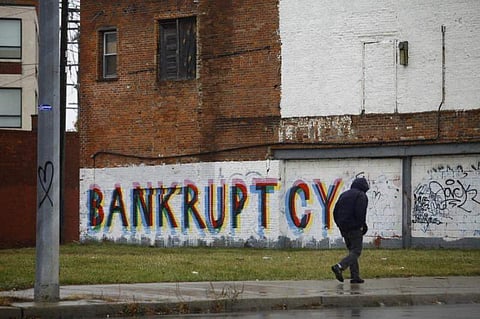

NEW DELHI: The Insolvency and Bankruptcy Code (IBC) has now completed seven years, during which it has facilitated closure of over 2,500 cases of NPAs. Yet it continues to draw flak from critics for its poor recovery rate – the amount of money recovered by banks and other financial institutions as a percentage of claims admitted by them.
Banks have recovered Rs 2.5 lakh crore out of admitted claims of Rs 8.3 lakh crore from 612 cases resolved till December 2022. That works out to a recovery rate of only 30%. This has led to people raising questions on the effectiveness of the whole process, so much so that a parliamentary committee chaired by member of parliament Jayant Sinha has suggested that there should be a threshold for recoveries under insolvency process. But advocates of IBC reject such suggestions as well as the doubts over effectiveness of IBC.
Not a recovery tool
The foremost arguments against the suggestions that IBC is failing (because of poor recovery rates) is that the new insolvency regime is not a tool for recovery. The purpose of the IBC is resolution in a time-bound manner, say experts.
“The objective of any insolvency law is to resolve the stress/insolvency timely so that assets don’t lose value and firms that have potential to survive revives timely. The SARFAESI Act is focused on recovery for secured creditors and that is where we should look for statistics if we want to assess the recovery for secured creditors,” says Dr Neeti Shikha, lecturer, University of Bradford, UK. Shikha was earlier the head of Centre for Insolvency and Bankruptcy, Indian Institute of Corporate Affairs.
Experts say that it is utopian to think claims will be fully realized. In practice, they say, there will be a gap in what creditors are owed and what can be realized through the insolvency process, else there will be no insolvency situation. But should the gap between admitted claims and recovery be so high?
Inflated claims, deflated recoveries
MS Sahoo, the former chairman of the insolvency regulator -- Insolvency and Bankruptcy Board of India (IBBI) – explains that often in case of IBC, the amount of claims is inflated and realisation is deflated.He says that insolvency law has a provision of clawing back the amount which has been lost through avoidance transactions. According to him, applications have been filed for avoidance transactions valued at Rs 2.3 lakh crore.The amount clawed back is not reflected in the amount of recovery because disposal of these applications take much longer than the resolution of the insolvency case.
Sahoo says that in many cases loans are guaranteed by personal guarantors (who are often the promoters of the companies under insolvency). Insolvency proceedings against personal guarantors are a separate process, and any realization from them will also be added to the overall recovery amount, but that does not get reflected immediately. The former IBBI chairman also says that the resolution plans also include infusion of equity in the company, which is not reflected in the realised amount.
Sahoo further says that the admitted claims of banks could also include the amount of guarantee. For example, he says that if a loan amount of Rs 25,000 crore has been lent on guarantee, there will be two claims, one for loan and the other for guarantee, thus the same amount is computed twice. The amount of claims banks admit also includes interest, penalty, etc., which inflate the total outstanding dues.
The insolvency regulator in its latest quarterly newsletter says that the realisable value of the assets available with the 611 companies that were rescued through insolvency process, when they entered the insolvency process, was only Rs 1.44 lakh crore, though they owed Rs 8.32 lakh crore to creditors. The resolution plans realised Rs 2.53 lakh crore, which is around 176% of the liquidation value of these companies.
“Any other option of recovery or liquidation would have recovered at best Rs 100 minus the cost of recovery/liquidation, while the creditors recovered Rs 176 under IBC. The excess recovery of Rs 76 is a bonus from IBC,” claims the regulator.
Mamta Binani, an insolvency professional, who oversaw the first resolution under insolvency law (Synergies Dooray Automative Ltd), says IBC has been a time tested mechanism is so many other geographies and India has already found the first benefit of this law, by way of inculcating financial discipline.
The ‘discipline’ that Binani is talking about is manifested in the number of NPA cases that got resolved even before admission of application by NCLT. Till December 2022, over 24,200 applications for initiation of insolvency against companies defaulting Rs 7.7 lakh crore were resolved before admission.